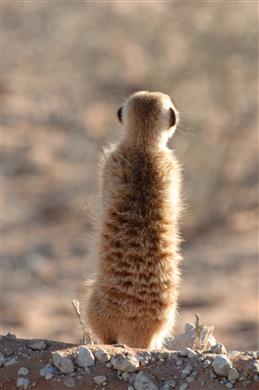A brief account of the biodiversity resources of ecological importance in the Orange-Senqu River basin:
The Senqu sub-basin of Lesotho
The Drakensberg-Maloti mountains are a recognised biodiversity hotspot with an estimated 3 100 plant species of which 30% are endemic (UNDP-GEF 2008). This area also supports an extensive network of high altitude wetland bogs and sponges, crucial to the hydrological cycle of the Orange River. Only 0,4% of Lesotho’s land area is protected at present; however, there are two transfrontier initiatives underway with South Africa: the Maloti-Drakensberg Transfrontier Conservation and Development Area Programme, and the Letšeng-la-letsie Wetlands Protected Area in southern Lesotho (Mokuku et al. 2002).
In Lesotho, the main threats to biodiversity and ecosystem stability in the Orange River catchment are (UNDP-GEF 2008):
- Rangeland degradation through overgrazing
- Cultivation of unsuitable soils, leading to severe erosion
- Severe deforestation throughout most of Lesotho, resulting in erosion
- Increase in pest species such as blackfly, decline of the Maloti Minnow (Pseudobarbus quathlambae) and explosion in rodent populations
The Orange sub-basins of South Africa
Habitat types in South Africa range from alpine vegetation in the eastern highlands adjacent to Lesotho, through various grassland types, to a variety of Karoo and false Karoo vegetation types in the arid western regions. The natural environment has been altered by urbanisation and development in much of the basin.
Land degradation through inadequate land management is the largest threat to terrestrial ecosystems within the basin. Priority areas are the upper reaches of the Orange River and its tributaries (which are susceptible to erosion, leading to sedimentation) and the arid lower reaches of the basin, where poor land management is threatening ecosystems.
Protected areas make up just 3% of the area of the South African part of the Orange River basin, and Kalahari Gemsbok Park accounts for 80% of that area. There are two main transfrontier areas in the basin subject to international treaties: the Kgalagadi Transfrontier Park with Botswana, and the /Ai-/Ais – Richtersveld Transfrontier Park and Conservation Area with Namibia. Areas around major dams in the Orange River are protected as provincial nature reserves.

A Meerkat in Kgalagadi game reserve.
Source:MisterE 2009
( click to enlarge )
The Molopo-Nossob sub-basin catchments of Botswana
The ephemeral Molopo/Nossob system in the Southern Kalahari falls within the Orange-Senqu River Basin in Namibia. The area consists mostly of sandveld savanna, and local endemism is extremely low.
Habitat loss and unsustainable rangeland management from localised overgrazing have been identified as major threats to biodiversity, along with over-harvesting of natural resources and excessive groundwater abstraction.
The Lower Orange and Molopo-Nossob catchments of Namibia
The Succulent Karoo, the Nama Karoo, and the Southern Kalahari are deserts that drain into the Orange-Senqu River basin. In the northern and eastern parts of the basin, the vegetation is semi-arid acacia tree-and-shrub savanna, giving way to dwarf shrub savanna southwards (ORASECOM 2008a).
Extensive rangeland livestock and wildlife farming is the primary land use in the basin. Because of variable rainfall and a low carrying capacity for livestock this area is defined as being at “high to very high risk” for conventional farming.
